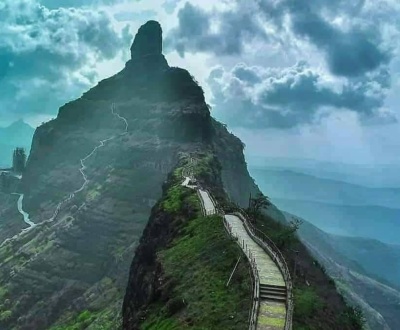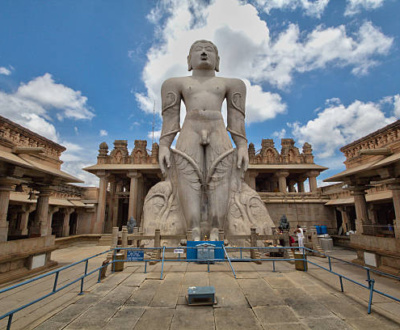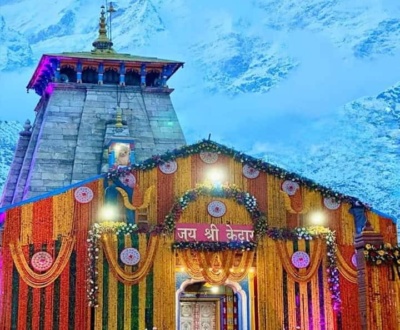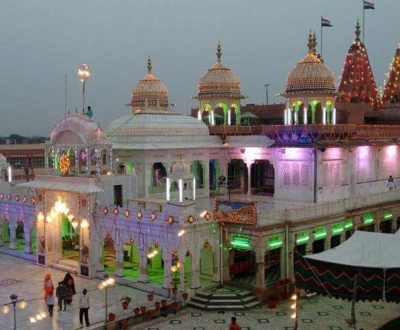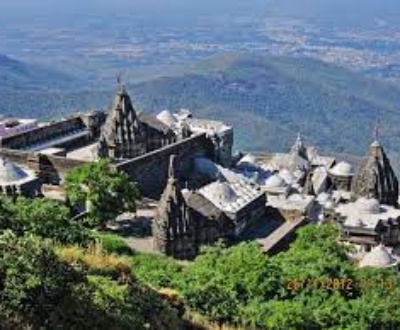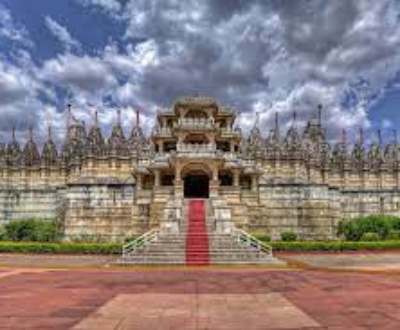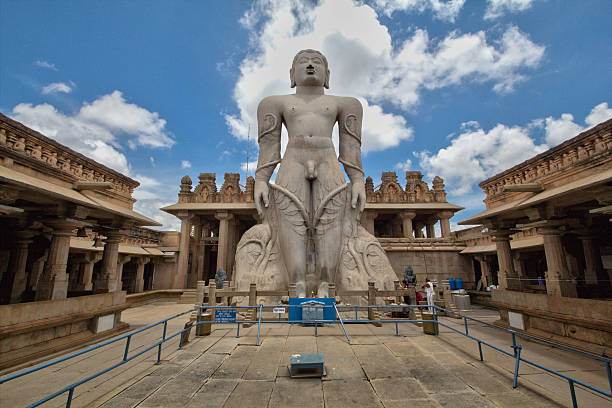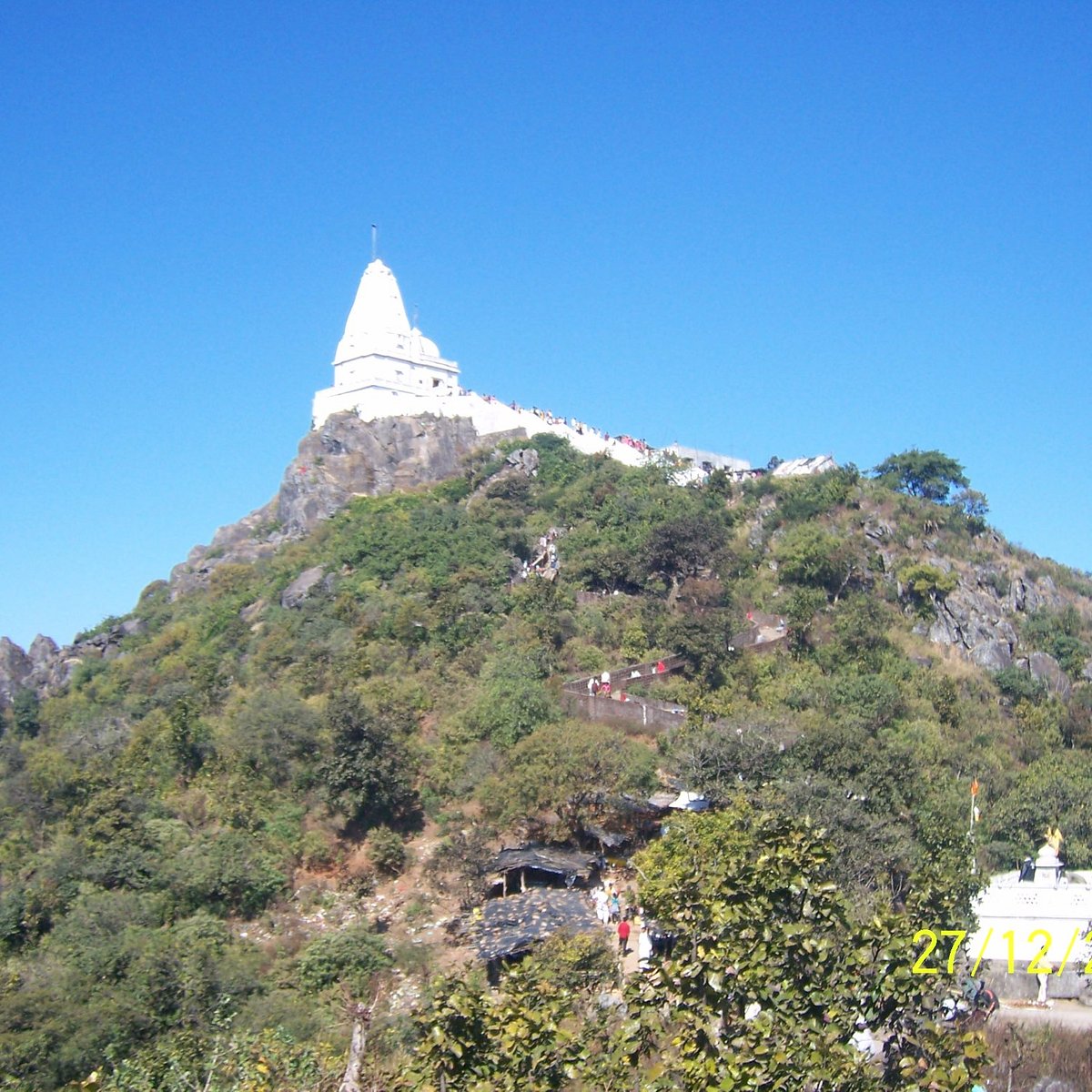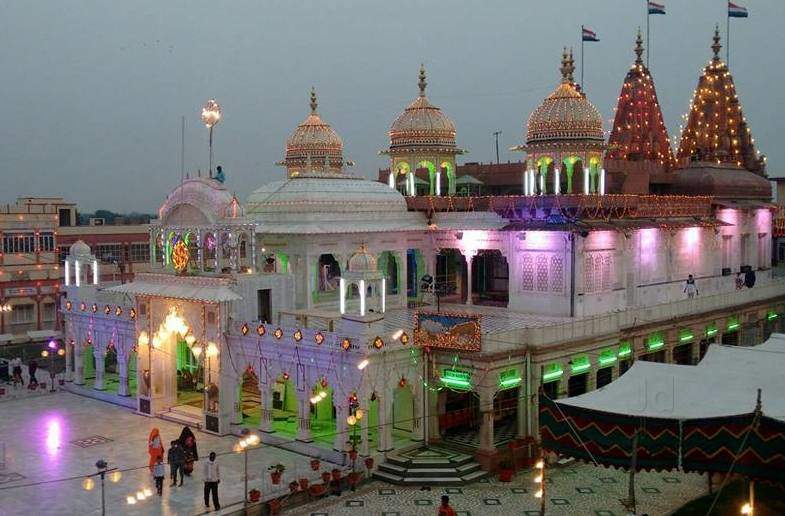1.Shri Pavapuri tirthh Dham
It is situated at Sirohi district of Rajasthan. This temple was built by K. P. Sanghvi Group and it comprises a Jain Tirth (Temple complex) and Jeev Raksha Kendra (Animal Welfare Center). The Tirth derived its name after the Pavada Agriculture well that exists there. soit comes under Top 5 jain Temples In Rajasthan.
Shri Kumarpalbhai V. Shah inspired Late Shri Hajarimalji Poonamchandji Sanghvi (Bafna) and Shri Babulalji Poonamchandji Sanghvi (Bafna), the founders of K. P. Sanghvi Group, to construct a Tirth Dham. They started construction and development of the campus on 30 May 1998, Saturday (Jeth Shukla 15, 2054 V. S.). The initial thought was to construct a small temple and a shelter for 100 cows only but the campus is now spread over more than 500 acres (2.0 km2) of land. The temple complex occupies 3,101,472 sq ft (288,136.2 m2) area and the Jeev Raksha Kendra (Animal Welfare Center) occupies 7,196,112 sq ft (668,540.7 m2)
It took two and a half years to construct the temple with an average of 400 artisans working daily. The construction was completed on 7 February 2001, Wednesday (Magh Shukla 14, 2057 V. S.) and was finally opened for worship.
The campus has an Animal Welfare Center that tends to stray cows, buffaloes, dogs and donkeys. Founded in 1998, the goshala covers over 7,000,000 sq ft (650,000 m2) of area and houses more than 5000 stray cattle. To take care of the animals, the center also employs over 150 people and a few veterinary doctors.
Shri Kumarpalbhai V. Shah inspired the Late Shri HajarimaljiPoonamchandji Sanghvi (Bafna) and the Late Shri BabulaljiPoonamchandji Sanghvi (Bafna), the founders of KP Sanghvi Group, to construct this Tirth Dham; and thereafter the construction and development of the campus began on May 30, 1998, Saturday (Jeth Shukla 15, 2054 V. S.).
The initial thought was to construct a temple and a shelter for 100 cows but by God’s grace, the campus has now spread to over more than 238 acres of land that provide shelter to no less than 7,500 stray cattle. Named after the Pavada Agriculture well situated in the area, the campus includes a Jain Tirth (temple complex) occupying 31,01,472 sq. ft. area and Jeev Raksha Kendra (animal welfare centre) occupying 71,96,112 sq. ft.area.
The KP Sanghvi Group employed 400 artisans who worked every day for two and a half years, to build this marvellous masterpiece, a revered tribute to the Jain Tirthankaras.
The construction was completed on February 07, 2001, Wednesday (Magh Shukla 14, 2057 V. S.) and was finally opened for worship. Thousands of devotees witnessed the Pratishtha Mahotsav (opening ceremony) of the Tirth Dham with spellbound piety and fervour.
The Temple complex is dotted with small dome-shaped temples standing in resplendent glory, dedicated to various venerated Gods and Goddess. The domes of these temples are adorned with gold plated Kalash, which makes the temple complex a sight to behold. A garden and a lake have also been constructed in the complex to add to the religious and spiritual ambience of the place. Pavapuri also has a check dam that collects and stores rainwater, which fulfils various water requirements.
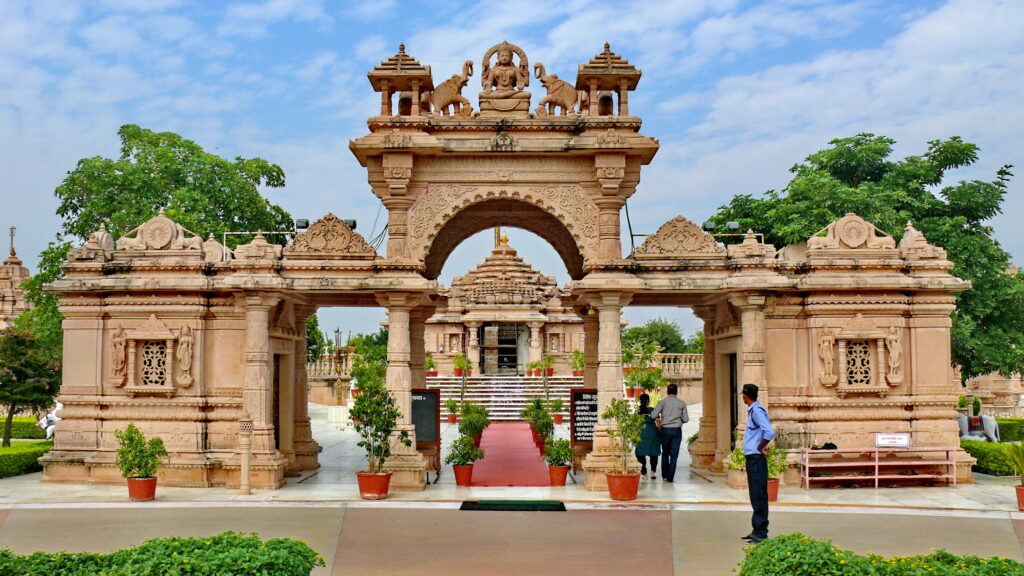
2.Palitana Temple
The Palitana temples are the large groups of Jain temples located on Shatrunjaya hills near Palitana in Bhavnagar district, Gujarat, India. Also known as Padliptapur of Kathiawad in historic texts, the dense collection of over 800 small shrines and large temples here has led many to call Palitana as a “city of temples”. It is one of the most sacred sites of Svetambara tradition within Jainism. These temples were built in and after the 11th century CE.
The Palitana site contains nearly 1000 temples on the hills spread mostly in nine clusters, some being vast temple complexes, while most are small in size. The main temple is dedicated to Rishabhanatha, the first Tirthankara; it is the holiest shrine for the svetambara sect. Marble is the preferred material of construction. The Palitana temples complex is near the top of the hills, in groups called Tonks (Tuks) along the various ridges of the hill tops. According to Anadji Kalyanji Trust, more than 400,000 pilgrims visited this pilgrimage in 2010.
Jains believe that 23 of 24 Jain Tirthankaras, except Neminatha, sanctified the Palitana hill by their visits. This makes the site particularly important to the Jain tradition. These temples are reached by most pilgrims and visitors by climbing stone steps along a hilly trail of about 3500 steps. Some hire pallanquin in the town at the base of the hills, to be carried to the temples complex. The Palitana temples, along with the Shikharji in Jharkhand, is believed to be the holiest of all pilgrimage places by the Jain community. Top 5 Jain Temple In Rajasthan.
Digambara Jains have only one temple here on the hills.Hingraj Ambikadevi (known as Hinglaj Mata) is considered as the presiding deity of the hill, who is a Jain Yakshini (attendant deity).As the temple-city was built to be an abode for the divine, no one is allowed to stay overnight, including the priests.
Location
Palitana is a small town about 55 kilometers southwest of Bhavnagar city and 25 kilometers south of Songadh village in Bhavnagar district in southeastern Gujarat. It is midst an arid-marshy terrain near the Shetrunji river. About 2 kilometers to the south of Palitana town are twin hilltops with a saddle-like valley with a peak height of about 600 meters. These are the Palitana hills, historically called the Shatrunjaya Hills The word Shatrunjaya is interpreted as a “place of victory”. According to Paul Das, a scholar of Jainism, Shatrunjaya hill literally means “the hill which conquers enemies”.On these hilltops is a fortified wall complex with space for canons built by the local Hindu ruler after the 14th century to resist any raids and destruction. Within this fortified walls, on the ridges of these hills is the largest collection of Svetambara Jain temples, called the Palitana temples.
The steps for the trek to Palitana temples starts in the southern part of the Palitana town, where there a number of monasteries, rest houses, shops and small temples. The steps to the Palitana temples begin to the west of a major active Jain temple and to the east of the newly built Samovsaran Mandir and museum by the Tapa Gaccha subtradition of Jains. The stone-concrete stairs gently wind along the hill, climbing up into the fort and to the summit with temples. Along this climb, are small temples, rest stops with drinking water for the pilgrims and visitors to sit and rest before resuming their trek. Near the fort, the steps fork into two. The eastern side typically is the entrance for a traditional clockwise circumambulation of the temples, while the other the exit. The trek involves climbing over 3500 stone steps.
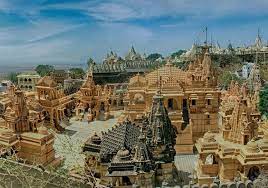
3. Jahazpur Temple( Top 5 Jain Temple In Rajasthan.)
Jahazpur is a city and a municipality in bhilwara district in the indian state of Rajasthan. It is also the tehsil headquarters of the Jahazpur tehsil. It is commonly popular for a temple called Jain temple swastidham and built around a fort.
According to legend, the fort of Jahazpur was originally built by Samprati, grandson of the great Mauryan emperor Ashoka, who was a follower of Jainism. This fort used to protect the terrain of Hadoti Bundi and Mewar like a giridwar. In the tenth century, Rana Kumbha rebuilt the fort of Jahazpur Top 5 Jain Temple In Rajasthan..
Jahazpur is an ancient town in Rajasthan near Bundi and Shahpura, towns of Bhilwara. (polar coordinates: 25 ° 37’7 “N 75 ° 16’32” E), and the town of Deoli in Tonk District, 96 mi (154 km). The ruins of several ancient Jain temples have been found at Jahazpur. It is also a municipal and assembly constituency. This area is full of mineral wealth. Top 5 Jain Temple In Rajasthan.
Jahazpur along with Hasteda is known for its ancient idols of Munisuwartnath. The temple at Jahazpur and hasteda is dedicated to Munisuvrat the twentieth Tirthankara of Jainism. The Moolnayak idol at newly built the Jahaj (ship) shaped temple at Jahazpur is a black-coloured idol of Munisuvrata Swami. This temple has been constructed with the inspiration of Shri 105 Swasti Bhushan Mataji. The idol is considered miraculous by Jains. Top 5 Jain Temple In Rajasthan.
The statue of Munisuvrat Nath was unearthed from the ground dug for the construction of a house in Jahazpur in 2013. Top 5 Jain Temple In Rajasthan.
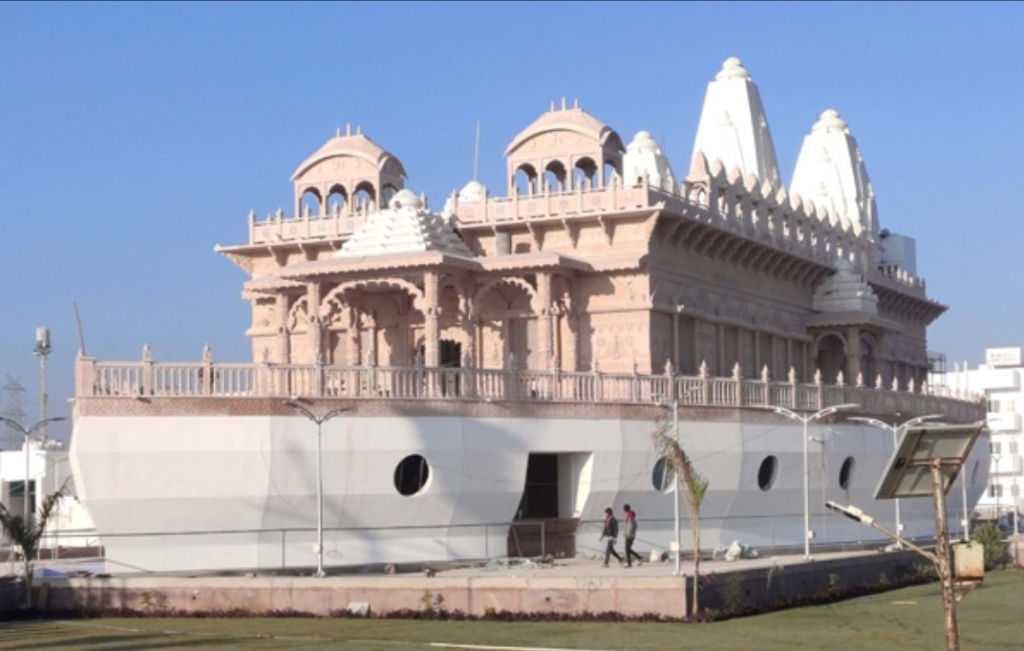
4. Jambudweep ( Top 5 Jain Temple In Rajasthan.)
Jambudweep is a Digambara Jain temple in Hastinapur, Uttar Pradesh built under the blessings of Gyanmati Mataji in 1972.Jambudweep is a depiction of Jain cosmology Jambudvipa.
Jambudweep was founded by Gyanmati Mataji in 1972 and the model of Jambudvipa was completed in 1985. For the tirtha, Nalini Balbir reported
The main attraction of this vast campus is the Jambudvipa. By its height, this original construction dominates all other buildings. It is meant both for education of the believers, since it shows them the Jaina representation of the universe, and for their entertainment. One can climb to the top by an inner staircase, or go boating around the Lavanasamudra
Jambudweep depicts the model Jain cosmology has been designed here under the supervision of Shri Gyanmati Mataji was in 1985. Unique circular structures of Jain Geography ‘Jambudweep’ has been constructed with white & coloured marble stones in the diameter of 250 feet (76 m) with 101 feet (31 m) tall Mount Sumeru Parvat is built by light pink marble situated in the center of Jambudweep Rachna. Top 5 Jain Temple In Rajasthan.
The fundamental idea behind this temple is to connect devotional temple visit with religious adventure and educate devotees about the Jain cosmology. The official name of the tirtha is the Digambar Jain Institute of Cosmographic Research (Digambar Jain Trilok Shodh Sansthan) and its main attraction is the building constructed as a model of Jambudvipa. Top 5 Jain Temple In Rajasthan.
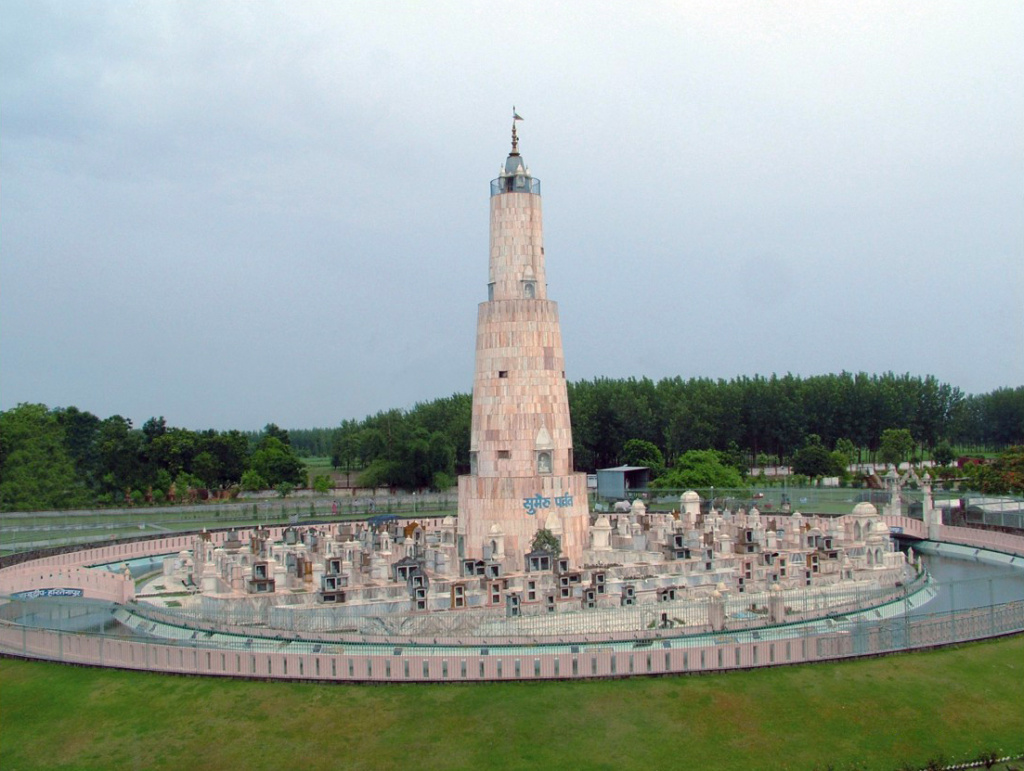
5. Bijoliya parasnath
Bijolia Parshvanath Temple or Tapodaya Teerth Kshetra is a Jain pilgrimage center located in Bijolia town in Bhilwara district of Rajasthan.
Bijolia is famous for two rock inscriptions, both dated 1170 CE (V. S. 1226). One inscription provides the genealogy of the Chahamanas of Shakambhari and the second is a Jaina poem called Uttama Sikhara Purana. The first inscription opens with salutation to Parshvanatha and records coronation of Somesvara. The third verse of inscription describes how Someshvara gave the grant to build Parshvanatha temple in Rewna village. The latter inscription, engraved near the door of the Parsvanatha temple, records the homage of Manoratha, son of Mahidhara. According to Jain tradition, this place is believed to be where the Uttama Sikhara Purana was composed.
According to Peter Flügel, the Undeshvar Shiva temple of Bijolia was originally a Śvētāmbara temple based on carvings of prominent Jain figures in the temple exterior.
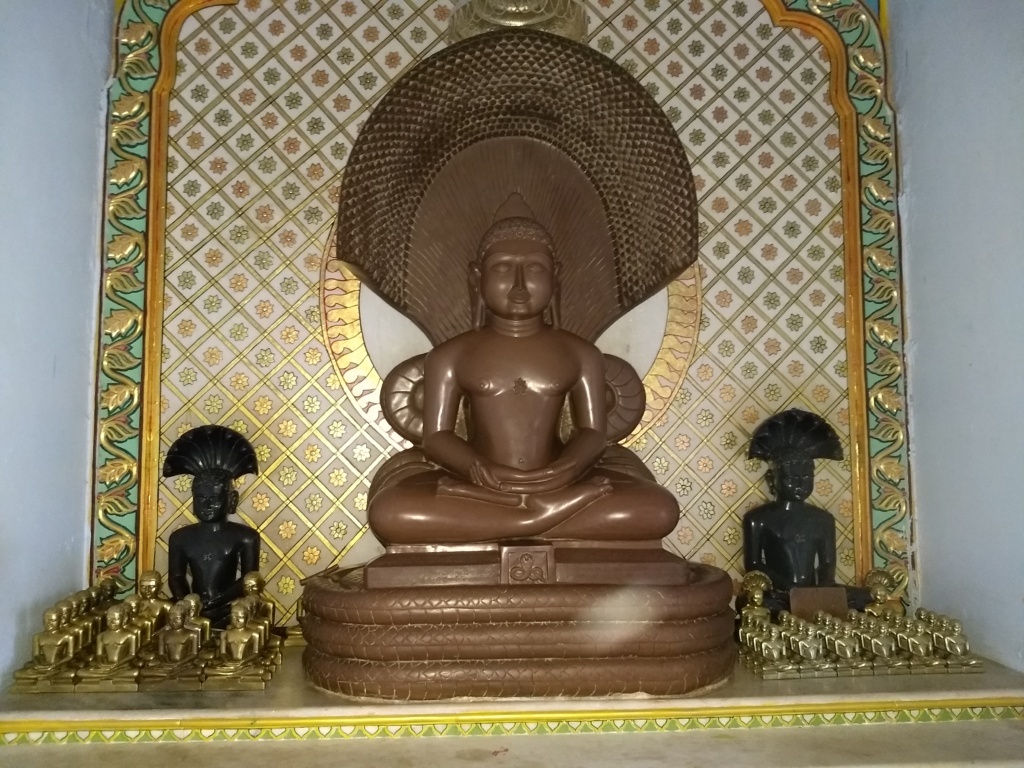
More from our blog
See all postsRecent Posts
- Mangi Tungi, Maharashtra: A Spiritual and Natural Gem of Western India September 14, 2023
- Kashmir:- The Heaven On Earth September 14, 2023
- Gommateshwara Bahubali Temple, Karnataka: A Spiritual Oasis of Serenity and Grandeur September 14, 2023

